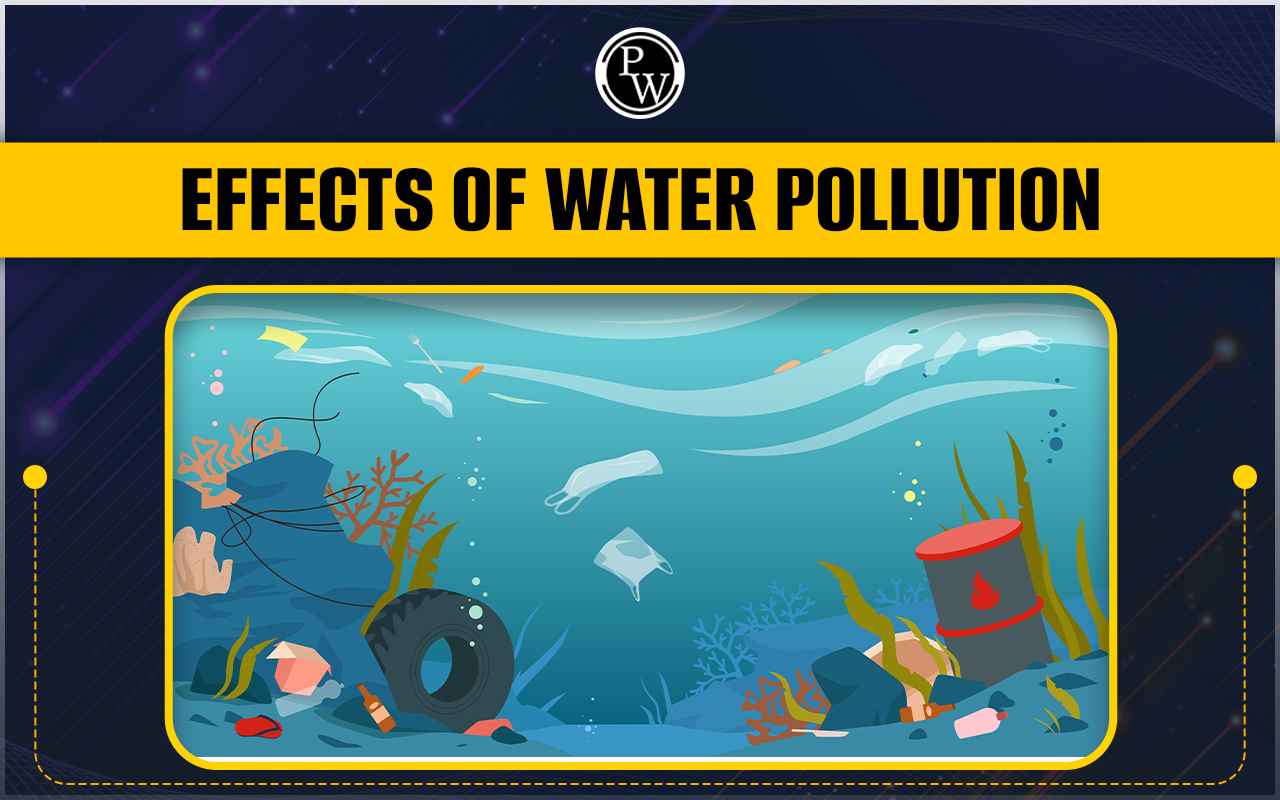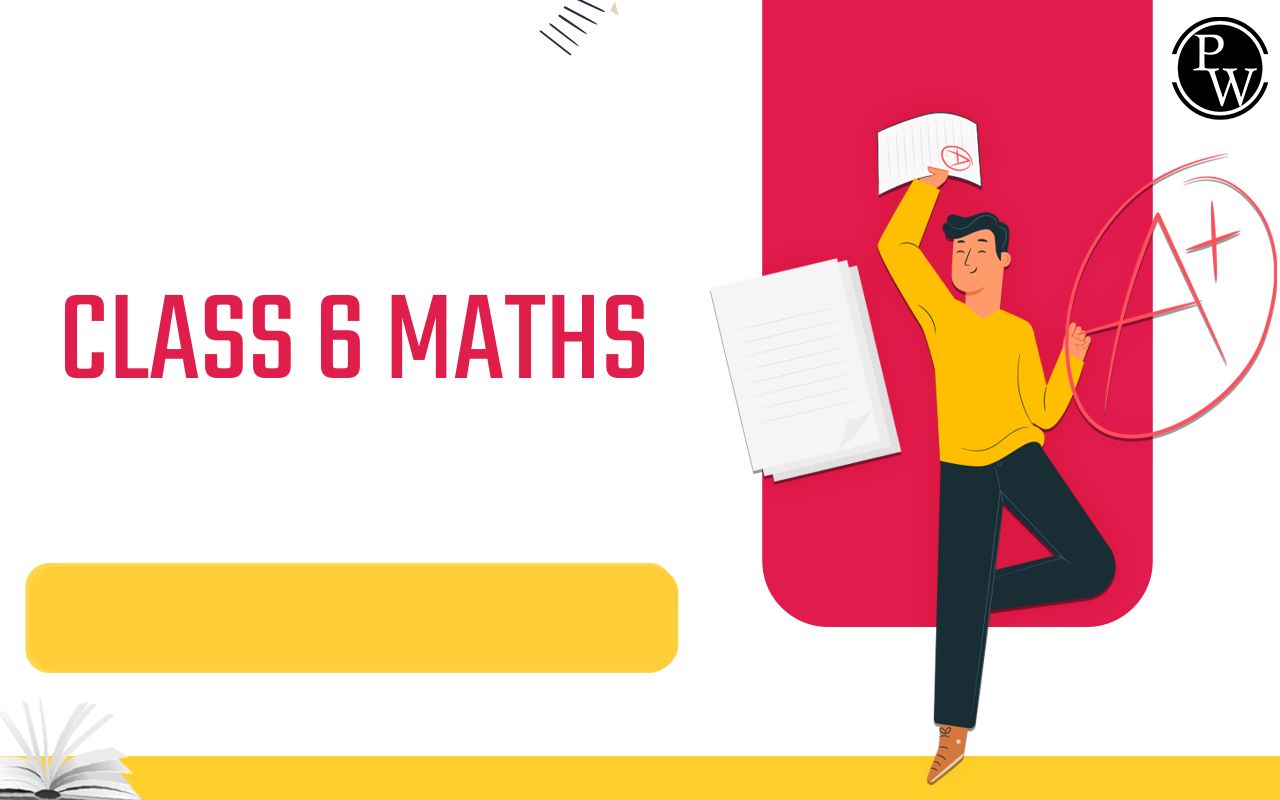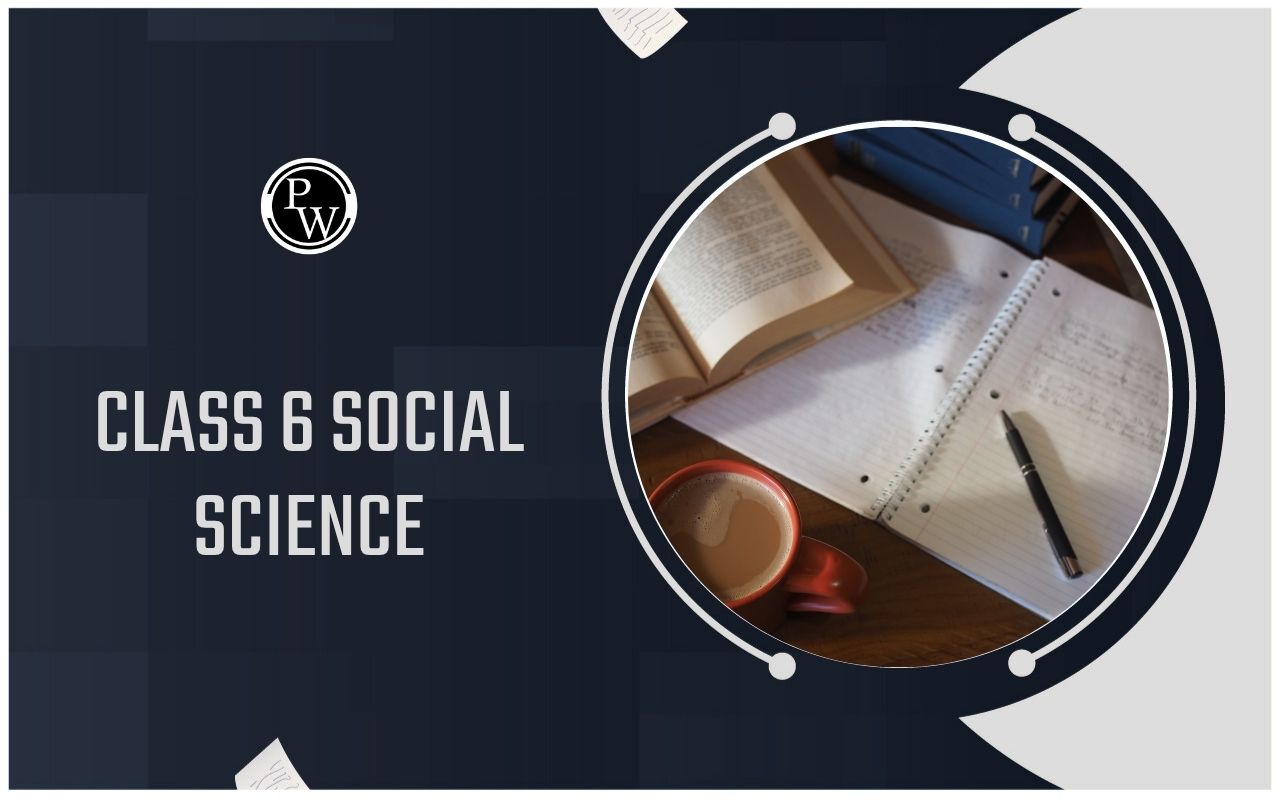

Effects of Water Pollution: Water bodies accumulate waste materials and wash away toxins and effluents from factories, eventually leading to water pollution. Most liquid wastes are directly dumped in the lakes and rivers, which carry them to large water bodies like seas and oceans.
While water, a polar molecule, can break down most of these harmful compounds, nondegradable materials like plastic, metals and other substances remain in water bodies for millions of years, causing damage to flora and fauna. Water Pollution not only deteriorates water quality but makes the survival of fish, sharks, whales, and other water animals difficult due to the reduced capacity of polluted water to carry oxygen. In this article, we will discuss water pollution's sources, effects, and management in detail.What is Pollution?
Pollution is the presence of unwanted materials that are not a natural part of the ecosystem but are introduced due to man-made activities. It affects the ecosystem's health, disturbs the ecological balance, harms the geochemical cycles, and damages plants and animals. Pollution can occur due to natural causes resulting from volcanic eruptions, entry of harmful ultraviolet radiation from the sun, natural forest fires, and increased microbial activity. Man-made activities like deforestation, burning of fossil fuels, Industrial wastes, emission of gases from vehicles, Air conditioners, Refrigerators, and use of insecticides, fertilisers, and pesticides for agriculture, are the major sources of pollution. The particles which harm the environment when present in high quantities are called pollutants. Let us study the different types of pollution in detail.Effects of Air Pollution On Environment
What are the Different types of Pollution?
Soil Pollution
In this type of pollution, the top layer of soil gets eroded and washed away, exposing the inner layers and reducing the soil fertility. Due to the removal of the top layer, the roots of trees also become exposed, making them weaker and reducing their ability to hold the soil together.- Agricultural practices in recent times aimed at improving crop yield to feed the ever-growing human population have converted Greenlands into deserts. As soil becomes drier and drier, its moisture retention capacity rescues, clay particles harden, and the soil becomes lifeless.
- Use of chemical fertilisers containing harmful toxins, pesticides, and insecticides that eliminate pests but damage soil fertility are all leading causes of Soil Pollution.
- Mining activities for extracting precious metals are another contributor to soil pollution. The soil becomes loose, rocks break down, and the normal composition of the soil is lost.
Air Pollution
Introduction of harmful gases into the atmosphere and the increase in their concentration gives rise to Air pollution. These gases harm the normal composition of air, reducing oxygen content and increasing greenhouse gases.- Greenhouse gases like Carbon and Sulphur dioxide absorb heat from the sun and trap it in the troposphere, making the earth warmer and triggering Global warming. Due to this increase, ice caps metals, sea levels rise, and floods and hurricanes become more frequent.
- Some other causes of air pollution include the release of industrial exhaust directly into the air, nitrous oxides from airplanes, toxic gases from vehicles, and many more.
- Increase in livestock rearing for meat and milk also increase the release of Methane into the atmosphere. Methane is highly inflammable and has been involved in all major extinction-level events.
- These gases also damage the ozone layer, which forms a protective dome over the troposphere and prevents the entry of ultraviolet rays into the atmosphere.
Effects of Air Pollution on Plants
Noise Pollution
Any undesired or irritating sound that impacts the health and well-being of people and other living things is called noise pollution. Decibels measure sound, and noise is created when the decibels are beyond permissible limits. The following are the harmful effects of Noise Pollution-- An excessively loud, persistent noise can cause headaches, a racing heartbeat, high blood pressure, respiratory irritation, colitis, gastritis, and even heart attacks.
- Repeated loud noise exposures can cause hearing loss and/or persistent deafness. Loud noise can hinder hearing warning signs, leading to workplace accidents and injuries.
- Loud noise can also cause physical and mental stress, diminish productivity, disrupt communication, and interfere with focus.
Water Pollution
When dangerous substances—often chemicals or microorganisms—contaminate a stream, river, lake, ocean, aquifer, or other body of water, their quality deteriorates, becoming toxic for humans and the environment. This is known as water pollution. Now let us understand the causes and effects of Water Pollution.Water Pollution and Causes
The rising levels of waste generated from Human activities have rested in the accumulation of plastics, increased chemical toxicity, and led to the biomagnification of water bodies. Biomagnification is a process wherein the concentration of the toxin in the food chain keeps increasing from the prey to the predator. The major causes of Water Pollution are- Using rivers and lakes for bathing and washing animals, washing clothes, and dumping domestic kitchen waste results in water pollution.
- Flow of sewage into water bodies without proper treatment is another cause.
- Industries directly release their effluents containing hard metals and chemicals into water bodies.
- The harmful gases in the air combine with vapor to form acid rain which then pours into water bodies.
- Oil spills from transport ships form thick films over the oceans and seas, preventing fish from breathing.
- The chemicals from agricultural fields get washed away by rain into water bodies, increasing toxicity.
- Radioactive wastes from Nuclear plants are also dumped into oceans.
- Electronic wastes like computers and mobile phones reach ocean beds and slowly release harmful chemicals.
Double Fertilization In Angiosperms
Harmful Effects of Water Pollution
Water bodies are home to millions of species of plants and animals that are major contributors to the world's ecological balance.- The phytoplanktons are the major releases of Oxygen which produce more oxygen than trees on the land.
- As the water becomes more toxic, these sensitive plants get killed, and the Oxygen balance is disturbed.
- In the absence of phytoplankton, zooplanktons receive less food, affecting small fishes and the entire food chain.
- The toxic chemicals burn the skin of water animals, reduce dissolved oxygen, and reduce the lifespan of whales and sharks.
- Oil spills remain in water bodies for years and float over the surface, making oceans warmer, less habitable, and toxic.
- Nondegradable wastes like plastics accumulate at the bottom of the oceans and remain there for millions of years, affecting the animals living on sea beds.
- Fishes consume these toxins, which in turn are consumed by humans, which results in severe disorders like mercury poisoning.
- Due to increased organic matter, anaerobic bacteria and other microbes grow beyond their limit, further depleting oxygen and increasing the biological oxygen demand.
- Drinking such water causes numerous diseases, including dysentery and diarrhea, cholera, typhoid, and genetic disorders.
- Water bodies like ponds and lakes where the water is relatively still get completely covered in algal bloom resulting in the eutrophication of the plants and animals.
Methods to Control Water Pollution
Conscious human efforts to reduce Water Pollution can restore the water bodies to their normal health and prevent further loss of biodiversity. Some of these steps include-- All domestic waste like sewage and industrial effluents must be treated before release into water bodies.
- Use of plastics and other nondegrading objects must be completely banned.
- Multinational efforts to clean oceans and restore normal balance must take place.
- Burning of fossil fuels should be reduced as it eventually leads to acid rain.
- Water bodies should not be used for bathing or washing clothes.
- Chemical-based agricultural products must be replaced with organic fertilisers.
- Oil spills and accidental leakages must be prevented at all costs.
- Steps should be taken to rescue Global warming as the warming of water bodies results in the death of sensitive species.
Difference Between Plant Cell And Animal Cell
Related Links -
Water Pollution <span style=
Is Water Pollution harmful to humans?
While the direct effects of water pollution are seen on marine animals, humans are also indirectly affected because of increased diseases like cholera, dysentery and an increased risk of hereditary disorders.
What is the most significant cause of Water Pollution?
Plastics have completely disturbed freshwater and marine ecology. It remains in the water for the longest time, gets eaten by fishes and other aquatic animals, and creates a toxic environment that kills millions of fish yearly.
What is the most dangerous effect of Water Pollution?
The oxygen in the atmosphere will significantly reduce in the coming years if the phytoplanktons continue to die because of polluted water. Eventually, the air will become unbreathable, and all land animals will die.
Which step is most necessary to reduce Water Pollution?
Setting up wastewater treatment plants even in remoter parts of the world can significantly reduce Water pollution by preventing harmful wastes from entering water bodies. It will reduce the release of hard metals, and aquatic balance will be restored.
Talk to a counsellorHave doubts? Our support team will be happy to assist you!

Check out these Related Articles
Free Learning Resources
PW Books
Notes (Class 10-12)
PW Study Materials
Notes (Class 6-9)
Ncert Solutions
Govt Exams
Class 6th to 12th Online Courses
Govt Job Exams Courses
UPSC Coaching
Defence Exam Coaching
Gate Exam Coaching
Other Exams
Know about Physics Wallah
Physics Wallah is an Indian edtech platform that provides accessible & comprehensive learning experiences to students from Class 6th to postgraduate level. We also provide extensive NCERT solutions, sample paper, NEET, JEE Mains, BITSAT previous year papers & more such resources to students. Physics Wallah also caters to over 3.5 million registered students and over 78 lakh+ Youtube subscribers with 4.8 rating on its app.
We Stand Out because
We provide students with intensive courses with India’s qualified & experienced faculties & mentors. PW strives to make the learning experience comprehensive and accessible for students of all sections of society. We believe in empowering every single student who couldn't dream of a good career in engineering and medical field earlier.
Our Key Focus Areas
Physics Wallah's main focus is to make the learning experience as economical as possible for all students. With our affordable courses like Lakshya, Udaan and Arjuna and many others, we have been able to provide a platform for lakhs of aspirants. From providing Chemistry, Maths, Physics formula to giving e-books of eminent authors like RD Sharma, RS Aggarwal and Lakhmir Singh, PW focuses on every single student's need for preparation.
What Makes Us Different
Physics Wallah strives to develop a comprehensive pedagogical structure for students, where they get a state-of-the-art learning experience with study material and resources. Apart from catering students preparing for JEE Mains and NEET, PW also provides study material for each state board like Uttar Pradesh, Bihar, and others
Copyright © 2025 Physicswallah Limited All rights reserved.











